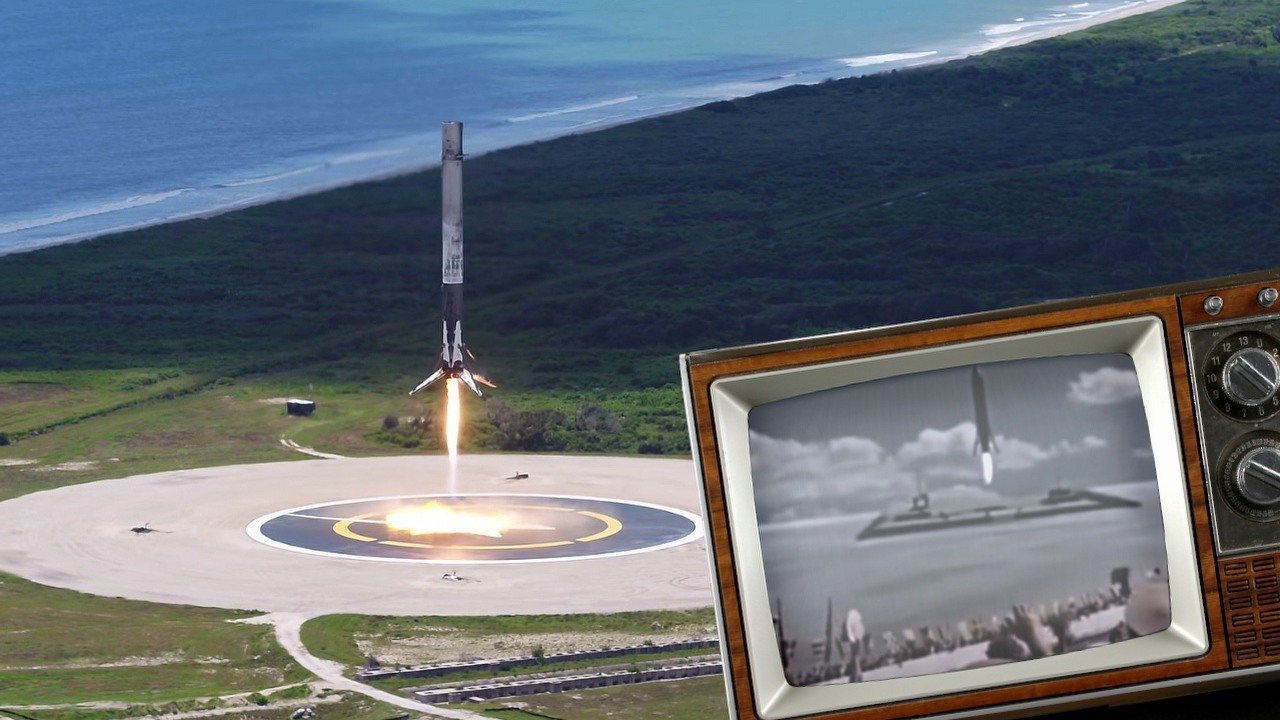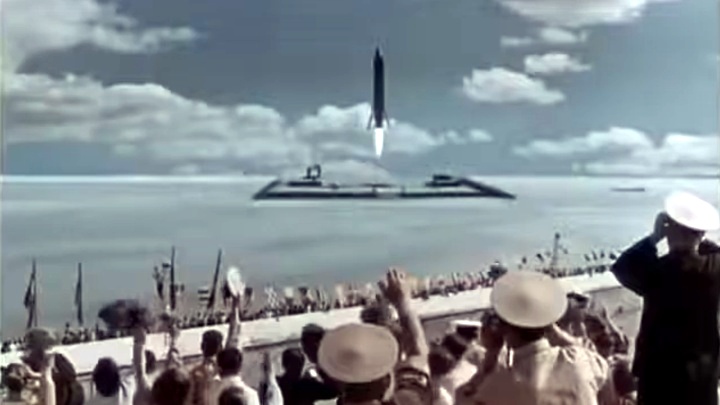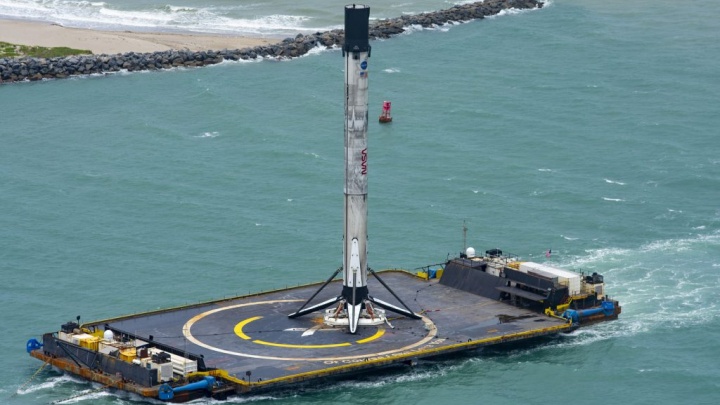Great Shot of Landing SpaceX Rocket Looks Like SF Movie
A great shot taken during the landing of the SpaceX Falcon 9 rocket appeared on the web. It's nice to see something that looks like pulled out straight from science fiction and is now as real as Chompski in space.

- A video published on Twitter shows reality like in science-fiction movies;
- Reusable Falcon 9 rockets have already concluded 99 flights, including 60 successful landings of the first rocket stage.
The Falcon 9 reusable rockets developed by SpaceX are known for their spectacular landings. Although often the captured moment of touchdown itself was invisible or of poor quality (as explained in the penultimate paragraph). Of course, you can also find good recordings. Twitter user Pranay Pathole published one of them in quite good quality. You can watch on it the first stage of the rocket, which has landed for the seventh time.
Previously, we could only admire such scenes in science-fiction movies or imagine them while reading SF literature. Some of the works of cinematography have predicted the future with quite disturbing accuracy, as the Russian (or rather Soviet) movie The Sky Calls, visible in the picture below. Although it may have happened that the movie inspired Elon Musk, because he likes to watch it.

Falcon 9, developed by SpaceX, is the first successful device of its kind. You can give an example of American space shuttles, but of course, they were not rockets. Rather, they were spacecraft that needed external tanks and other, disposable rockets to bring them into orbit. All this was destroyed in the process, and the shuttle returned from space alone. This made every STS (Space Transportation System) mission quite expensive. One launch of the shuttle consumed an average of 1.3 billion dollars (the main fuel tank alone cost 60 million dollars).
Meanwhile, a single orbital trip of the Falcon 9 rocket costs between 30 and 95 million dollars. The price varies depending on the client's requirements. At the same time, the rocket is able to lift almost 23 tons (for comparison, the maximum capacity of the space shuttle was about 28 tons). The relatively low launch cost of Falcon 9 is due to the recoverable first stage. It is the most expensive part of the rocket, so recovering it in perfect condition gives measurable financial benefits.
Falcon 9 has already completed 99 flights and 60 successful landings. The first section of the rocket is powered by 9 Merlin engines with a total thrust force in a vacuum of 8227 kN (for comparison - an average locomotive pulls an entire train with 120 kN). The second stage is powered by a single engine of the same type. The whole rocket weighs almost 550,000 kg. The first stage, the one than can be recovered, lands using engines and special folding legs. This is often done on unmanned platform-barges that float on the ocean. It is from such watery landing site that this recording comes.

In many transmissions from the return of the rocket section, the image disappeared during touchdown. The reason were the vibrations caused by the stream of gases from the engine's nozzle during the final moments. The vibrations were so strong that they desynchronized satellite dishes on the barge and as a result the signal temporarily disappeared. As you can see, however, SpaceX dealt with the problem, because the landing from the tweet was recorded perfectly.
The next launch of Falcon 9 is scheduled for December 5, 2020, at 11:39 AM ET. The mission called "CRS-21" will supply the International Space Station. It's worth to watch SpaceX's Twitter to keep up to date with launch transmissions. Finally, I post a compilation of successful landings of Falcon 9's first stage, enjoy the show.
- Baldur's Gate 3 publisher criticizes Elon Musk's plans. „We don't need another cash grab”
- Do you need to play The Outer Worlds 1 before The Outer Worlds 2? Here's how the connections between RPGs look like
- “It’s better than Wikipedia,” Elon Musk announces Grokipedia 0.1 release, but people are already spotting flaws
0

Author: Arkadiusz Strzala
His adventure in writing began with his own blog and contributing to one of the early forums (in the olden days of Wireless Application Protocol). An electrical engineer by profession, he has a passion for technology, constructing and, of course, playing computer games. He has been a newsman and writer for Gamepressure since April 2020. He specializes in energy and space tech. However, he does not shy away from more relaxed matters every now and then. He loves watching science-fiction movies and car channels on YouTube. He mainly plays on the PC, although he has modest console experience too. He prefers real-time strategies, FPS and all sorts of simulators.
Latest News
- Ellie from The Last of Us inspired the creature in Bruce Straley's new game
- Larian Studios CEO explains generative AI use in development of Divinity
- Kojima Productions celebrates its big 10th anniversary with an upgraded Ludens
- They didn't conquer TGA, but they were still very successful. Now they are thanking the fans in the best possible way
- Pawel Sasko revealed his favorite Cyberpunk 2077 ending and explained what CD Projekt Red wanted to say to players through the saddest one

